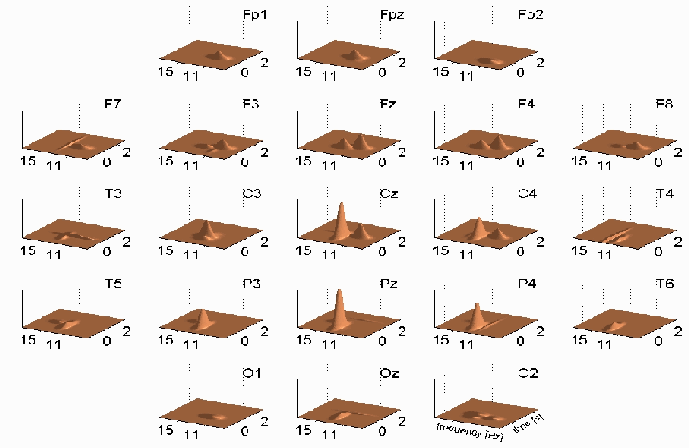
This is an example of how adaptive time-frequency parametrization (Matching Pursuit algorithm) can resolve EEG structures overlapping in both time and frequency. 21 channels of sleep EEG were subjected to Matching Pursuit parametrization. Time-frequency atoms corresponding to sleep spindles were chosen to construct this maps of their ime-frequency energy distribution across the derivations.
We observe that the faster spindle is more pronounced in parietal, and slower one - in frontal derivations, with transition appearing through Pz, Cz, F7. We may now examine full time-frequency maps and parameters of t-f atoms fitted to EEG by Matching Pursuit for these central electrodes: